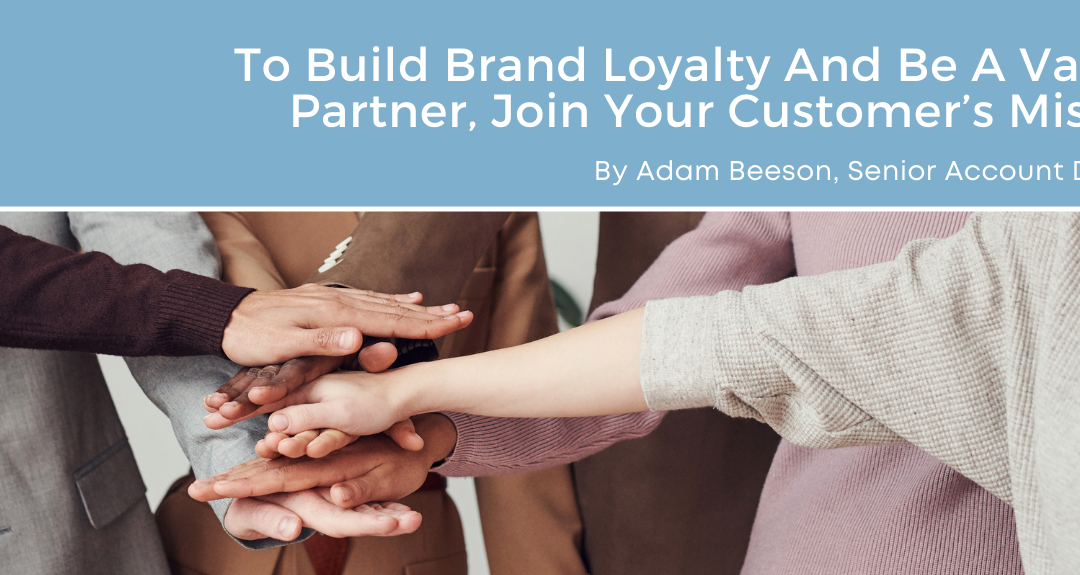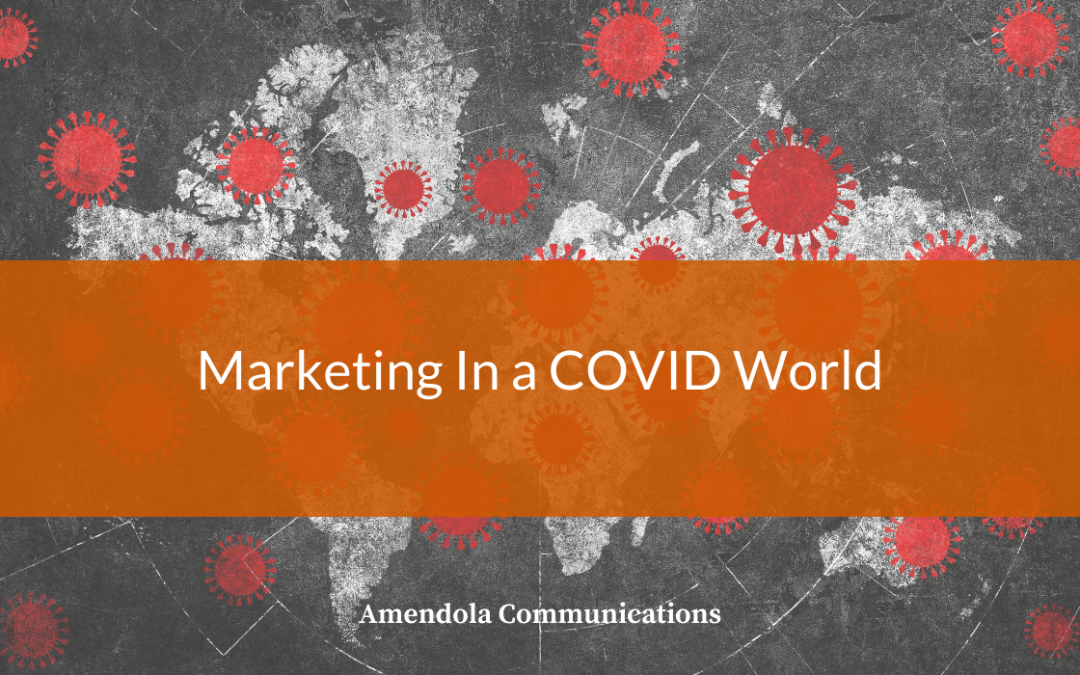
by Marcia Rhodes | Feb 19, 2025 | Blog
A strong partnership with a public relations (PR) agency offers numerous benefits to companies by generating attention and interest that draws in new employees, industry partners, and, most importantly, customers.
More and more companies are realizing the value of PR, as globally the PR market is expected to grow to more than $133 billion by 2027. In the U.S., demand for PR specialists is predicted to grow by about 6% by 2032 (faster than average), according to BLS.gov.
However, achieving stellar PR results requires some upfront efforts to ensure the alignment of goals and objectives between the client and the PR agency. The best PR agency–client relationships are characterized by collaboration, respect, unity, and a mutual understanding of the end goals and expectations.
Following are some tips for successful PR partnerships:
Establish a single source of contact: Designate a dedicated liaison who is accessible and responsive to requests for data and media interviews. The ideal partner shares information on company activities and news proactively and views the PR agency as a partner, not a vendor.
Know your people: Draw up a list of spokespeople, including internal executives and customers who will sing your praises, who can participate in media opportunities, as well as the specific topics they prefer to focus on. When it comes to healthcare media relations, it’s always best to lead with a provider customer than a solution provider.
Create the culture: The brands that realize the most value from PR have established a company culture that encourages adoption of new concepts and strategies. An essential component of this is a leadership team that sees the value of PR and its important role in the marketing mix to drive credibility, recognition, and brand awareness, as well as fueling ongoing online content marketing across integrated PESO (Paid, Earned, Shared and Owned) channels.
Develop a social plan: Social platforms such as LinkedIn offer another avenue beyond traditional media for brands to establish thought leadership and contribute to relevant industry conversations. To get the most out of social media, develop a written social media strategy and guidelines (we can help!) about having an active presence on relevant platforms. It is also a big help to have an executive team and employees who are — or willing to become — social media apostles.
See the big picture: Generating the media interest that will lead to valuable coverage and market attention doesn’t happen overnight. It’s important for clients to have a company-wide understanding that PR is not a “project,” but rather a process that should be integrated into every function of the organization from marketing and sales to product development and human resources.
Other factors that set the stage for a productive PR partnership include having a clear brand voice and message strategy, an optimized website, and a customer relationship management tool with a solid process in place for managing leads. (If you don’t have any of these, we can help get you there!) Ultimately, like all relationships, the PR agency–client partnership is all about taking the time to clearly communicate and understand each other to establish productive and positive collaborations.

by Jim Sweeney | Dec 18, 2024 | Blog
In the days following the Nov. 5 election, former X users flocked to the new social media platform Bluesky. Their descriptions upon arrival made them sound like refugees who’d fled a war-torn country and found sanctuary.
Bluesky, they said, is everything Twitter used to be before Elon Musk changed it to X and turned it into a platform for right-wing disinformation. Bluesky, they rhapsodized, is safe, informative, educational and, well, nice.
The internet could certainly use more niceness, but is Bluesky a place for brands? It depends.
Certainly not if their intent is to advertise because Bluesky does not accept ads and its owners say they intend to keep it that way. Of course, that was Reddit’s policy once, too. According to the company, it plans to charge fees for users who create custom domains on the site and will eventually sell subscriptions for higher-quality video uploads or profile customizations like colors and avatar frames.
But it’s hard to just ignore Bluesky. Its growth has been phenomenal. Since opening to the public in February, it has grown to over 25 million users. Post-election, it has been attracting nearly 1 million new users a day. It has been the most downloaded free app. Naturally, those numbers have drawn the attention of brands.
Its vigorous policing of content and blocking of racist, hateful and offensive material also makes it attractive to brands. Of course, that degree of control will become harder to achieve as the number of users rises.
Some brands (Duolingo, Hulu, Netflix) are posting organically while others like Red Bull and Xbox seem to have secured handles, but haven’t begun posting. Bluesky does not yet have a verification process, so trolls also are snatching up some brand handles, which is an argument for consumer-facing brands to, at minimum, control their names. For now, though, the platform is mostly user-generated content.
Besides the advertising ban, brands face another challenge on Bluesky. The platform lets users design and control their own feeds, which means they can filter out anything they don’t want to see. For users, it means a cleaner experience; for brands, it means fewer eyeballs. They will have to work to earn engagement with users who might not welcome their presence on the platform.
Politics aside, Bluesky differs from rivals X, Threads and Mastodon in another significant way. It’s an open platform with an API that is accessible to developers, which means any decent programmer can use the same architecture to build new interconnected sites, across which they can share content.
There is also a possibility that Bluesky becomes a de facto platform for liberals and progressives while X continues its conservative MAGA trend under Trump buddy Musk. If that happens, brands and thought leaders would have to decide whether it’s the audience they want to reach and whether joining Bluesky would tag them as progressive, which could cause a backlash (see Bud Light).
Brands and thought leaders that left X over unhappiness with its new direction and objectionable content shouldn’t feel compelled to join Bluesky right away. They can rely on Facebook, Instagram, TikTok and, of course, LinkedIn for messaging (see some best practice tips here.) Exceptions might be those who want specifically to reach a progressive audience or to signal their displeasure with the direction of X.
Marketers should, however, keep an eye on Bluesky to see if it continues its growth and makes any changes to be more accommodating to brands.
Below is a quick rundown of some Bluesky features. Keep in mind that the platform is still evolving, and these can change:
- Text posts have a 300-character limit.
- Users can self-label their posts, especially those containing sensitive content.
- “Starter Packs” are curated collections of accounts designed to help users find others with similar interests. One click allows users to follow or block all accounts within the pack.
- Users can customize their feed and viewing preferences.
- It includes an in-app music and video player.
- Bluesky offers custom domains, allowing users to personalize their handles with their domain names.

by Jack O'Brien | Dec 22, 2021 | Blog
To be successful in business, you have to come up with a viable idea, develop it, bring it to market, and sell it to customers. That may be an oversimplified version of the formula but the basic principles are there: craft a product or service and then spend most of your time selling it far and wide.
As with so many things in healthcare, this process is more complicated than usual. Caring for patients is always the top priority but then there are also so many different stakeholders and revenue streams that muddle how a company should explore expansion.
Ultimately, healthcare executives are the guiding force that can bring an organization to the next level by embodying the mission statement, promoting value to the market, and winning over skeptics.
But in an era where the playing field is so flat, where new markets emerge only to experience a sudden rush of competitive saturation, companies have to stand out. The most obvious answer to an executive might be to rely on standard business strategies to address these challenges.
However, I would argue that the best way to differentiate yourself as a company and secure necessary industry credibility is to operate above the fray.Optics matter, so leaders must recognize that opportunities to interface with the media and stakeholders as a vendor-neutral voice of reason are an effective, proven way to better serve the business.
Casting yourself as an industry authority or subject matter expert pays dividends down the line because outsiders can look at you and realize you have more to say than simply reciting the same sales pitch over and over.
In the years I spent as a healthcare reporter, some of my most valuable contacts in the industry were accomplished executives that could speak to specific events or general trends in a vendor-neutral way.
Neither me nor my audience needed to know about how their RCM company was the best at streamlining the financial experience for patients or how their virtual care service was going to be the Holy Grail of care access. Quality journalists aren’t there to hand out superlatives or write puff pieces about executives and the companies that they run; rehashing a press release isn’t why reporters do what they do.
However, soliciting the opinions of healthcare’s movers and shakers never goes out of style. For example, if there’s a significant policy announcement affecting payers and I can get an insurance executive on the phone to talk about ramifications without reminding me that they were the first to offer certain benefits to members, then that’s a source I can reliably turn to again down the line.
Subtlety, rather than outright salesmanship, is the best way to position your organization for maximum opportunity.
Getting your name in print, on industry panels, or invited to deliver keynotes should always be the goal because then you build a natural rapport with the audiences you’re most seeking to connect with. Everybody wants what they say to have merit and thought leadership is the ideal exercise to make that happen.
Perhaps most importantly to note, you and your company don’t have to be the star of the story; you just have to be in the story.
Since the initial outbreak of COVID-19, healthcare innovation has enjoyed prime media coverage, the likes of which hadn’t been seen before. Whether it was telehealth, remote patient monitoring, or vaccine research, there were thousands of stories printed about fast-moving developments in an industry that has historically been averse to change.
In each of the stories that ran on television, in print media, or on podcasts, there were ample opportunities for leaders to chime in about the future of healthcare. Many participated, but I implore those who didn’t to reconsider their approach to promoting their brand.
If there’s an outlet or reporter asking to associate your name with a trending story or a noteworthy event, even one that likely will not give you the sole spotlight, you’re better off accepting that invitation because now you’re linked to it.
I know there’s a strong inclination to use any and every media appearance to preach the company’s gospel, but there’s an even stronger value in looking at the world from a 30,000-foot view. If you can step outside yourself and speak to topics that are not simply related to your company’s latest announcement, you will gain invaluable industry credibility and media contacts that will return to you without hesitation.
Thought leadership is not just a pie-in-the-sky buzzword for the most outgoing executives in healthcare, it’s a useful strategy to expand brand awareness that every leader and their communications teams should be pursuing if they haven’t done so already.

by Adam Beeson | Sep 1, 2021 | Blog
Are you talking at your customers, or are you speaking their language and partnering on their mission? This is a question that every marketer, communicator and sales team member should be asking regularly.
We all have some level of brand loyalty in our lives. For me, those brands are Nike, Honda, Jersey Mike’s, Apple, Aurora Health Care and The Wall Street Journal. My allegiance to those brands is based on quality, style, company mission, customer service, product consistency, availability and ethical business practices (there was a time when I liked Volkswagen – they ruined that).
But more importantly, those brands align with what I am striving to accomplish in my life as a father, husband, professional, coach, and member of society.
I’m sure you have a similar list of your own.
The same is true in the B2B space and we frequently see this in the vendor space. A simple example is the technology brands that a company buys for its employees. One business is an Apple buyer, another HP, and yet another swears by Lenovo. And yet computers can largely all run the same software – it’s the set up and components inside the devices that slightly differ. Logically when the devices can all do the same thing, this would seem like an ideal scenario to purchase based on price or recent quality achievements–but the B2B brand loyalty remains.
So how do you establish this level of brand loyalty with B2B customers? How can you be “sticky” when your competition is providing a very similar product?
You need to be more than a vendor. You need to demonstrate that you are an ally on their mission.
Let’s consider a healthcare technology vendor – pick one, there are plenty. They’re solving for the difficult problems in healthcare, like access to mental health services, providing telehealth services, building an improved billing platform, managing opioid prescribing, simplifying decentralized clinical trials….and the list goes on. And this is what their team concentrates on every single day.
But you know what? These solutions are only a small piece of what healthcare providers are concentrating on. The industry has three or four vendor competitors solving for the same problem. And they all tout similar features, such as integrations with big EHR providers like Epic and Cerner. As much as the tech vendor is going to point to a certain feature or new rating, the healthcare provider would rather move on to bigger issues.
And that’s where the opportunity lies: the customer’s bigger mission.
Newsflash – every healthcare provider has a similar objective and a mission statement along the lines of: ‘provide healthcare services that help individuals, families, and communities live longer and healthier lives.’
Now, if you want to be the healthcare provider’s long-term partner or ally, guess what they want you to help them accomplish? Hint: it’s not just integration with an EHR or tracking how many opioids have been prescribed.
If you want to be a provider’s valued partner, you must demonstrate how your solution will help them achieve their mission of saving lives and creating healthier populations.
If your solution is designed to solve for challenges in the mental health space, for example, an everyday vendor will demonstrate how their solution tracks a patient through their care and identifies patients at risk for pharmaceutical addiction.
But a valued partner is going to do those things, plus help track patients as they navigate multiple care providers and the justice system. The valued partner will demonstrate how their solution is improving care adoption for patients battling anxiety and depression. The ultimate outcome of a valued partner’s relationship will focus on improved community care statistics, decreasing arrest rates, and an overall healthier community.
As a health IT vendor seeking to align with a healthcare provider, communicating your story is critical and requires distinguishing yourself and your offering as a partner:
- Create a core narrative that explains how your brand is advancing overall industry mission priorities. Use this content internally and externally to drive your brand message. Refine and update this message on a quarterly basis.
- Leverage your core narrative to create thought leadership content. These new pieces of content can be leveraged in the press, distributed through your marketing nurture campaigns, posted as core blog content, drive your social media efforts, and sales teams can share this content widely with prospects and clients.
- Empower a leader as the owner of your vision for the industry mission. This person, or people, should be named as the author of your content. Further, leverage your PR agency to establish these leaders as a valued interview with industry reporters and then make them easily accessible to the press.
- Engage with your customers and tell their story as examples of how your efforts are advancing industry change and helping to accomplish their missions.
- Survey customers and prospects to better understand their priorities, and where they stand on efforts to move their business mission forward. Share survey data publicly to help the industry define next steps. Leverage this new business intelligence to engage with customers and prospects on how your products can help to achieve their mission.
- During regular meetings, ask clients where they stand on their mission priorities and how your solution can further help with those efforts. Provide insights on additional opportunities from your perspective. And then follow through.
Each of these key steps will redefine your brand and drive brand loyalty from your clients and your prospects. More importantly, this repeated process will allow you to demonstrate your commitment to being the company’s valued partner, time and time again. You will have aligned with their mission, demonstrated the success, and publicly committed to one another’s future success.

by Stacy State | Sep 9, 2020 | Blog
In mid-May we talked about the emergence of a new normal in public relations and marketing as a result of the COVID-19 pandemic. Media coverage of the virus has become all-consuming in the intervening four months.
Over 100 million pieces of news focused on COVID-19 have appeared. In just one sampled day, 340,000 came from 30,000 media outlets. As the lingering epicenter of the crisis, the United States produces one third of all global daily coverage.
Even as pandemic fatigue sets in among the American population, our collective obsession with the virus and its toll never wavers. Potential vaccines linger on the horizon bringing hope. However, even aggressive projections place their availability 5 to 6 months away. COVID-19 isn’t going anywhere anytime soon.
The brands and products that most easily resonate with Americans these days are those that fulfill critical needs, both physical and emotional. So, unless you’re selling hand sanitizer, outdoor entertainment, or any type of toilet paper, how do you keep your brand in front of your customers?
By making your brand feel critical.
The Five Things That Matter
Brand Messaging
Gone are the days of simple promotions. In today’s world the only messaging that stands out and feels genuine is that which tries to connect with people on a human level. The mixture of isolation, fear of the unknown, and an overwhelming sense of community and empathy has hot-wired most Americans to see the world differently in a very short amount of time. It has crystalized the things that matter and those that don’t. To matter, your messaging must account for this shift in thinking.
Social Media
The isolation of social distancing has caused 32% of Americans to spend more time on social media as a way to stay connected to their friends and family. Leveraging this groundswell of attention, paired with appropriate messaging, is the key to remaining relevant and to gaining new audiences. Make your brand into a trusted news source that offers important information during this time of need. Engage your followers in a conversation that proves valuable.
Virtual Events
Our need to connect with one another is fundamental. While physically isolated, virtual events have skyrocketed 1000% during the pandemic. These events are a collective backbone offering education, networking, and collaborative opportunities. It cannot be overstated how important these events are for socializing your brand’s presentations, white papers, and case studies. These webinars and virtual roundtables serve as important touchpoints with your existing customer base and essential engines generating new client leads.
Email Campaigns
Email remains another reliable and consistent communication vehicle. Since the beginning of the pandemic email open rates have improved 8% with a corresponding click-through increase of 22%. Incorporating the critical elements mentioned above into a comprehensive email campaign can help drive the success of your brand’s overall marketing strategy.
SEO & Lead Generation
The consistent theme here is Americans are turning to alternative tools to stay connected. Social media, virtual meetings, email, and the Internet have replaced most traditional in-person communication. Internet usage has surged 70%. A clever SEO & lead generation plan will plant the seeds that flourish long after COVID-19 has disappeared. Providing evergreen content that engages customers and answers core needs remains the heart of successful lead generation. Whitepapers, eBooks, and blog posts will always matter. And SEO drives their visibility.
The world has changed. People have changed. It’s impossible to know for how long. But for now, connecting with people requires embracing this new normal. The five keys listed here will help your brand lead as we all step into this brave new world.





